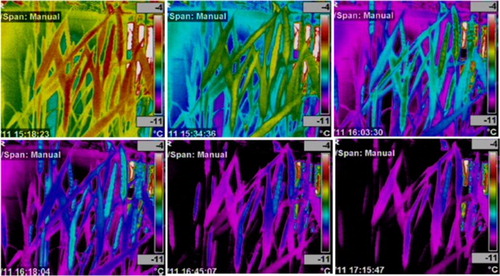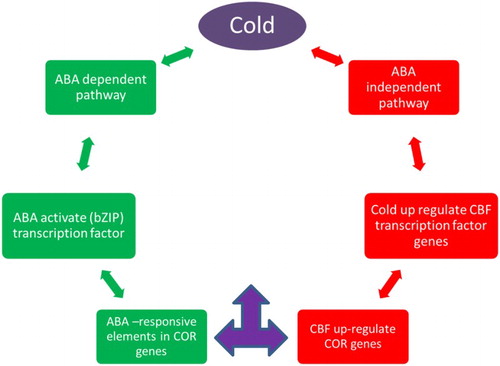Figures & data
Figure 1. Cold acclimation induces changes in cellular processes. Different responses are observed while exposing plants to low non-freezing temperatures. Modified from Xin and Browse (Citation2000).
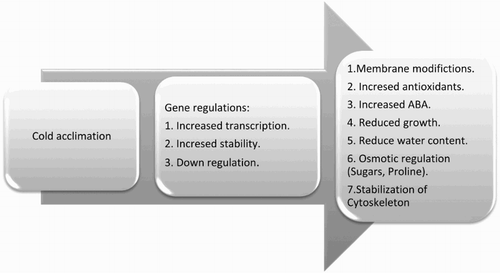
Figure 2. The adaptation mechanism of the plasma membrane during cold acclimation reported by proteomics studies (Takahashi et al. Citation2013).
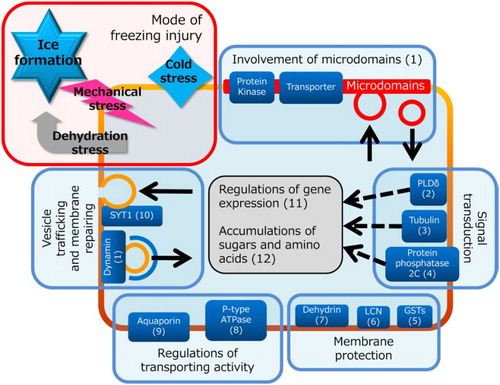
Figure 4. The use of IR thermography technique showing the pattern of ice nucleation events in wheat spikes of non-sprayed and non-acclimated plants. The plants were in a frost chamber and an IR camera was fixed in the front window of it while plants were subjected to a freezing temperature down to −6°C at a freezing rate of 2°C down each 2 hours. (Circles refer to the start points of ice nucleation and the arrows refer to its progress pattern) (Al-Issawi Citation2013).
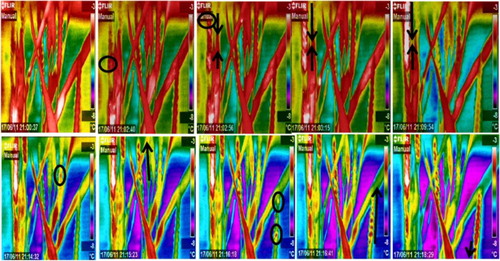
Figure 5. Avoiding ice nucleation by the supercooling mechanism in wheat (temperature dropped down to −11°C and no ice nucleation events were experienced) (Al-Issawi Citation2013).
